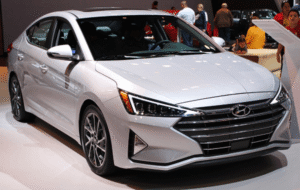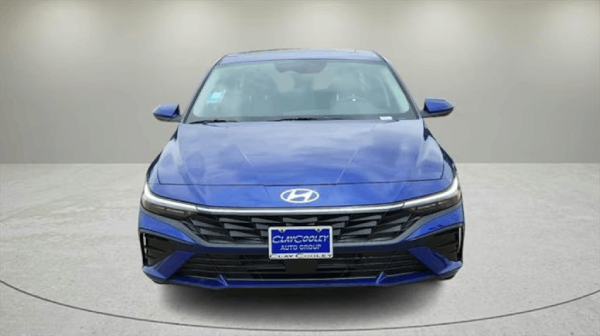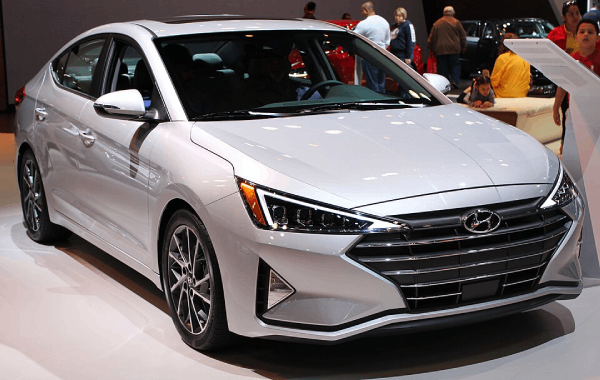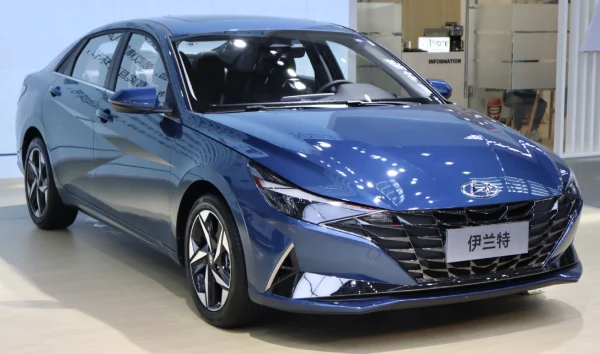Pros
- ✅ Improved Design: More subdued and premium design both inside and outside.
- ✅ Enhanced Interior Quality: Cabin quality is sophisticated with good materials and ergonomic layout.
- ✅ Standard Features: High levels of standard equipment, including dusk-sensing headlights, LED daytime running lights, and a 7.0-inch touchscreen.
- ✅ Connectivity: Apple CarPlay available; good tech integration (expected Android Auto upgrade).
- ✅ Comfortable Ride: Handles well in urban environments and offers a comfortable driving experience with a quiet cabin.
- ✅ Spacious Interior: Good legroom and shoulder room for passengers; ample boot space (458 litres).
- ✅ Warranty and Servicing: Five-year/unlimited km warranty, capped servicing, and roadside assistance.
Cons
- ❌ Limited Engine Power: The 2.0-litre engine may feel underpowered compared to competitors.
- ❌ Fuel Economy: Slightly worse fuel economy (7.1 litres per 100km) than its predecessor.
- ❌ Headroom Issues: Rear headroom is just around average, which might be a concern for taller passengers.
- ❌ Lack of Standard Navigation: No built-in sat-nav system in some trims; reliance on smartphone apps can be inconvenient.
- ❌ Tyre Noise: Some reports of noticeable tyre noise intrusion at higher speeds.
- ❌ Less Dynamic Feedback: Electric steering may lack the feel and feedback that enthusiasts prefer.
Table of Contents
A Notable Improvement in the Small Sedan Market
Among the greatest small sedans available right now, the 2016 Hyundai Elantra is a notable improvement over its predecessor. The oldest still in use for the 25-year-old Hyundai Elantra is the badge. Now in its sixth generation, this little sedan is also the top seller worldwide for the firm.
Target Market and Design
Therefore, even if its i30 hatchback brother quadruples its sales in Australia, which always loves automobiles of the hatch type, it is a significant matter for the Korean carmaker. The new 2016 Hyundai Elantra you are seeing here starts locally this week. It offers a more subdued and premium design both inside and outside, an all-new chassis, and new technologies to appeal to its target buyers and to entice people away from sedan versions of the top-selling Toyota Corolla and Mazda 3 and challenge the Ford Focus, Volkswagen Jetta, and Holden Cruze.
Hyundai describes these target buyers as “hatch and SUV rejectors,” those lured to the privacy and profile of the conventional three-box sedan and eager to resist the trend to tiny crossovers. Once more, in Hyundai’s words, they are usually older and more conservative. Hyundai has expanded its position in this declining but still significant market to more than 12 percent. The Elantra stays a key component in the machine since it accounts for around 8.5% of its Australian sales.
First Impressions and Interior Quality
Though otherwise lukewarm, this new car is noticeably better than its stylistically edgier predecessor on first impressions following a quick drive this week. Actually, in many respects it demonstrates general class leadership. First of all, the 2016 Hyundai Elantra’s cabin is rather like a shrunken Sonata. This means everything is laid out conservatively, yet the ergonomics offset the absence of pizzazz or vitality within.
While the material quality, particularly the Elite’s silver and piano black highlights (the former are also in the Active), leather seats, and clear, visible instruments, are all really good. This is a sophisticated small affair. The base Active at $21,490 plus on-road charges ($2300 more with an automatic gearbox) is $500 more than before and the same amount above the similar i30. It offers high levels of standard equipment, though, extending to dusk-sensing headlights, LED daytime running lights, a reverse-view camera, a full-sized spare wheel, cruise control, Bluetooth/USB connectivity, and a 7.0-inch touchscreen.
Technology and Connectivity
Apple CarPlay connectivity is also included in this unit; hence, if you have an iPhone, you may plug in and reflect your device onto the screen. That said, the basic Apple Maps is no substitute for an in-built sat-nav system since it’s lousy software (Apple’s issue, not Hyundai’s) and reliant on data on-demand, ergo having cell connectivity. Users of Android also miss out since Hyundai Australia does not currently have the license to run Android Auto with their vehicles. The firm claims that there will be a software upgrade available by the end of 2016.
Step up to the $26,490 auto-only Elite, and you will receive amenities including climate control, black or beige leather seats, electric-folding mirrors, a proximity key, a clever boot that opens by itself if you walk close by with the keys on you, and rear air vents. Though the $26,790 Mazda 3 Touring or $24,390 Ford Focus Trend sedans with autos receive standard sat-nav, it’s good equipment for the money. The Elantra range fits quite nicely against the similar Corolla Ascent and SX versions. The launch of the all-new Honda Civic soon will give this market more vitality. Right now, Volkswagen’s Jetta is the target of fierce discounts since it gets CarPlay/Android Auto.
Space and Practicality
With enough legroom and shoulder room for extended trips, good outward sight, and a pair of Isofix anchors, plus the previously stated vents in the Elite, rear seat space for two adults is usually acceptable. You also get a single map pocket and door bottle holders. Headroom is the one possible issue; it is just around average. At 458 liters, the boot is not all that far shy of the much bigger (but rear-drive) Holden Commodore; you can slide those rear seats forward for longer objects using latches in the boot itself. The redesigned dampers in the rear cause this capacity to be actually somewhat less than that of the preceding car. Given that it’s still 50 L more than the Mazda, we feel it’s a reasonable compromise. Under the floor comes a full-size spare; the Elite receives a cargo net. We do wish the Active had a boot release button so you could access it from outside without using the key fob.
Under the hood is a 2.0-liter MPi (multipoint injection) engine coupled to six-speed manual or auto gears running 112 kW at 6200 rpm and 192 Nm at 4000 rpm. Fans of Hyundai/Kia will find this falls short of the 2.0-liter GDi direct-injected powerplant with 129 kW capacity. Though it still has a bit more punch than the previous Elantra’s 1.8, it feels totally great around town or on the motorway at 2000 rpm. But push the car, or have a few hundred kg on board, and that generally intuitive auto will start to kick down a little more than we would want to use what pulling force there is.
Actually, the engine has a limited window of substantial torque output from roughly 3500 rpm in response. It is merely decent at best, but never inspirational. The new version’s fuel economy of 7.1 liters per 100km is reasonable in the contemporary environment, although it is slightly worse than that of the old Elantra. Remember too that in July this year a new 150kW/265Nm 1.6-liter turbocharged Elantra SR will arrive on our shores. That engine will perform this car significantly more fairly than the meat and potatoes 2.0-liter.
Driving Experience
In what way does the Elantra drive? Because the Korean tune is always overly soft, its Sydney-based suspension engineers modified it for our market in regular Hyundai Australia fashion. The end effect is something that seems really upscale. We do not joke about it. Among the several Hyundais with local tuning we have driven, this is almost perfect. The business tested roughly 50 various damper configurations, either front or rear, and made a plethora of other adjustments to the usual springs, stabilizer bar, and torsion beam bushes. Additionally translating into the chassis feel is the substantially stiffer body made from a lot of ultra-strength steel.
The intention was to make the configuration more flexible on longitudinal inputs—that is, potholes and ruts—but more responsive and stiffer under lateral ones, hence producing faster changes of direction. Stated differently, it should be appropriately comfortable navigating metropolitan roads—remember its demographic—but should also have this untapped reserve of dynamic capacity if, by some chance, you ever rely upon it. It produced too. The end effect is a compact car that rides and handles considerably better than any vehicle in this class truly needs. None of these vehicles will ever be pushed in anger the way we did during testing by any intended buyer.
Handling and Comfort
Why then did we press it? Hyundai Australia provided us with a test drive of the new Elantra on a series of Targa roads in Tasmania to support its audacious claims to independent testing. Really, then, how could we not? Whether surface-based, asphalt or gravel, pockmarked or corrugated, the suspension was remarkably flappable at disposing and rounding off the edges without ever seriously impairing handling or throwing the car off its line. While the way the car tucks in and tackles even those lengthy, sharp numbers that keep tightening beyond first impression without scrubbing is admirable, the quick change of direction testifies to a well-sorted chassis with superb balance.
The car maintained its flexibility to navigate rough surfaces, yet it remained sufficiently restrained and composed on rebound to maintain body control. Elevation changes were handled admirably. Although it lacks a little feel and feedback, the electric-assisted steering loads nicely at speed and lightens around town for parking. For someone bringing it to the bowls club, it is also rather quick on center without being overly racy. The road manners deteriorated somewhat naturally with three more persons on board and camera equipment on board and encroaching GVM. We either once or twice strike the bump stops, but no actual damage results. It proved to be a good weekend cruiser with a near-full load.
The compliancy also means the Elantra, even on the 17-inch wheels (with Hankook tires that scarcely complained once), performed well enough in the urban responsibilities most purchasers will undertake 99 percent of the time. It rarely seems brittle over the sharper road irregularities you face in cities; the overhangs did not scrape; rail lines and speed bumps are soaked up here better than in most tiny cars. The only actual dynamic bugbear we came into was tire noise intrusion, which got louder faster than usual. Though Hyundai’s assertion of much-improved NVH is worth considering, whether it’s the Hankooks or some lack of insulation, we aren’t convinced.
Still, this car strikes a better balance between comfort and fast handling than other appropriately expensive automobiles we have experienced. It didn’t need to; hence, Hyundai’s efforts are much more deserving of recognition. The Elantra SR should be rather the small sleeper. From an ownership standpoint, Hyundai iCare offers a five-year/unlimited km warranty, lifetime capped servicing, free roadside assistance for twelve months, and a 1500 km free first service.
Conclusion
In essence, the way the Elantra manages twisty roads is probably not a major factor for the target buyer; rather, it indicates a company that really thinks about how its vehicles are built for our particular market, and that speaks well. Indeed, despite the very little moves backwards in fuel economy and boot capacity, the 2017 Elantra is better in practically every other regard over its predecessor. Though a touch modest in a design sense and maybe in need of appropriate sat-nav at the elite level, the cabin is pretty posh, and the urban manners are outstanding and totally appropriate for the normal user.
Is the class leader Hyundai hoping for the new Elantra to be? Indeed, the new Elantra aims to be a top contender in its class. It’s a good pick if you want a roomy, comfortable, well-made small sedan that can really handle if needed.




